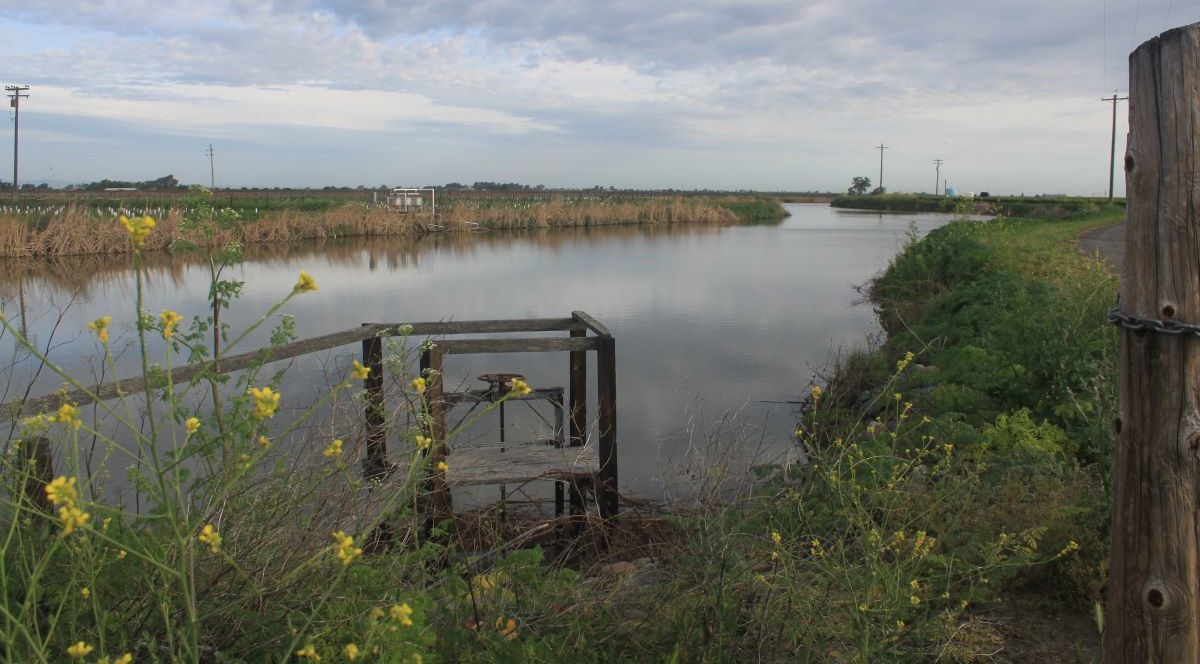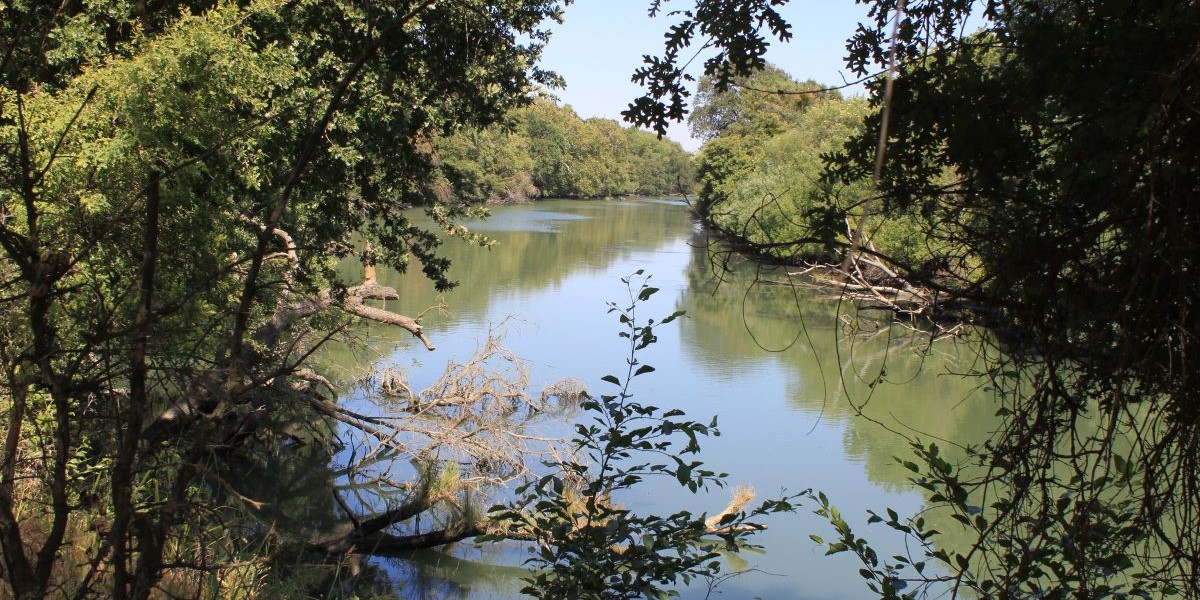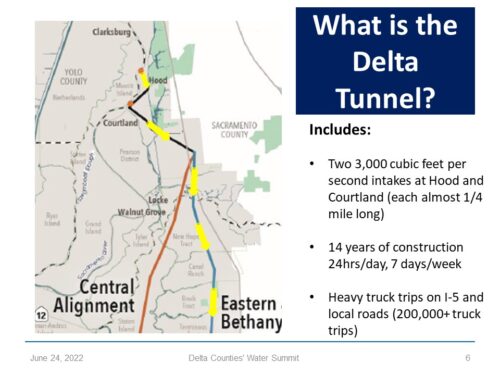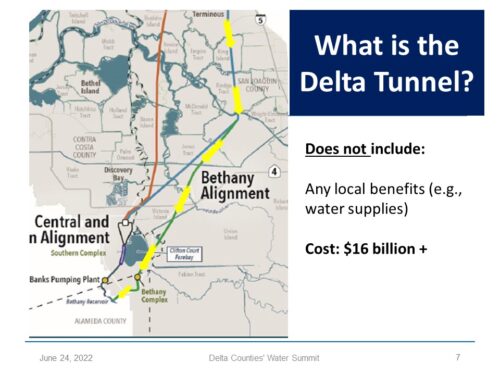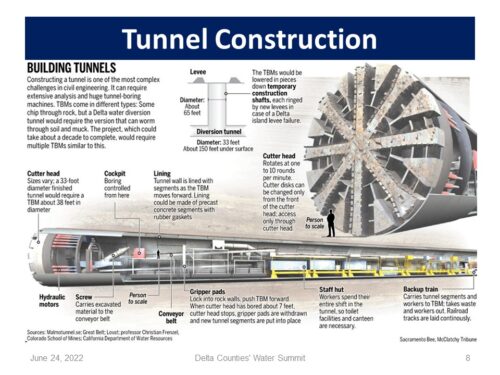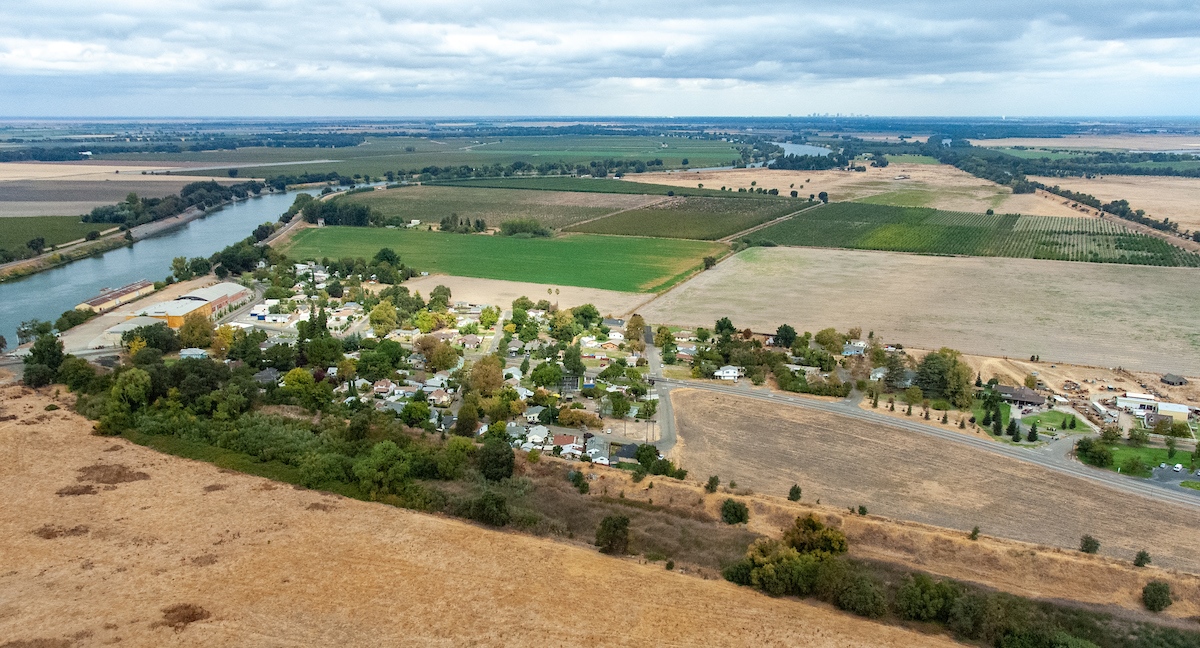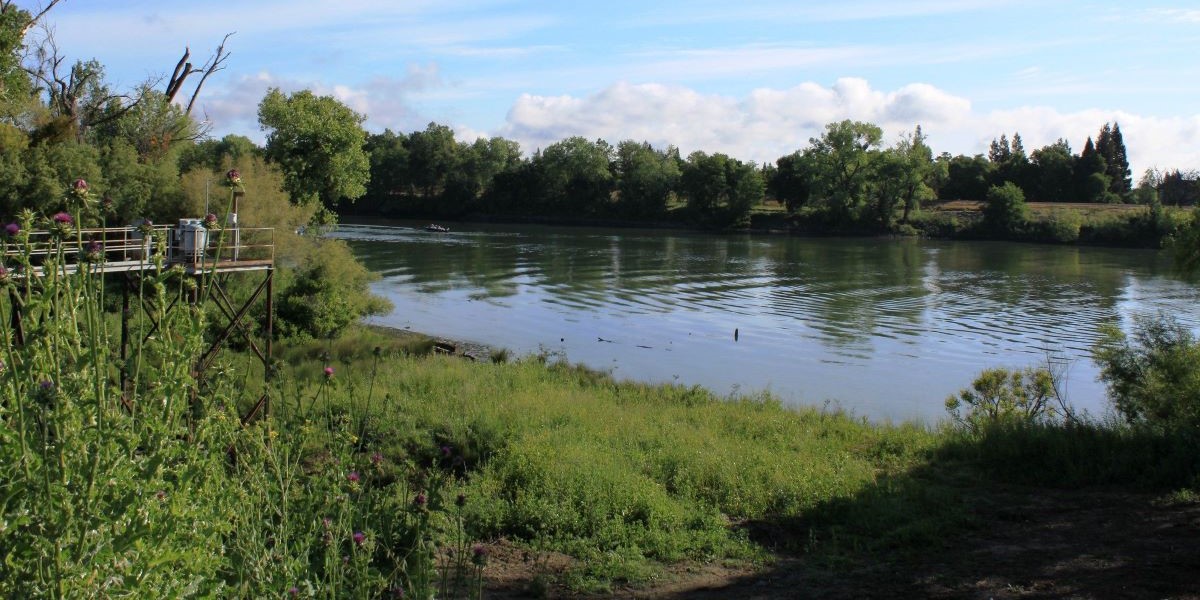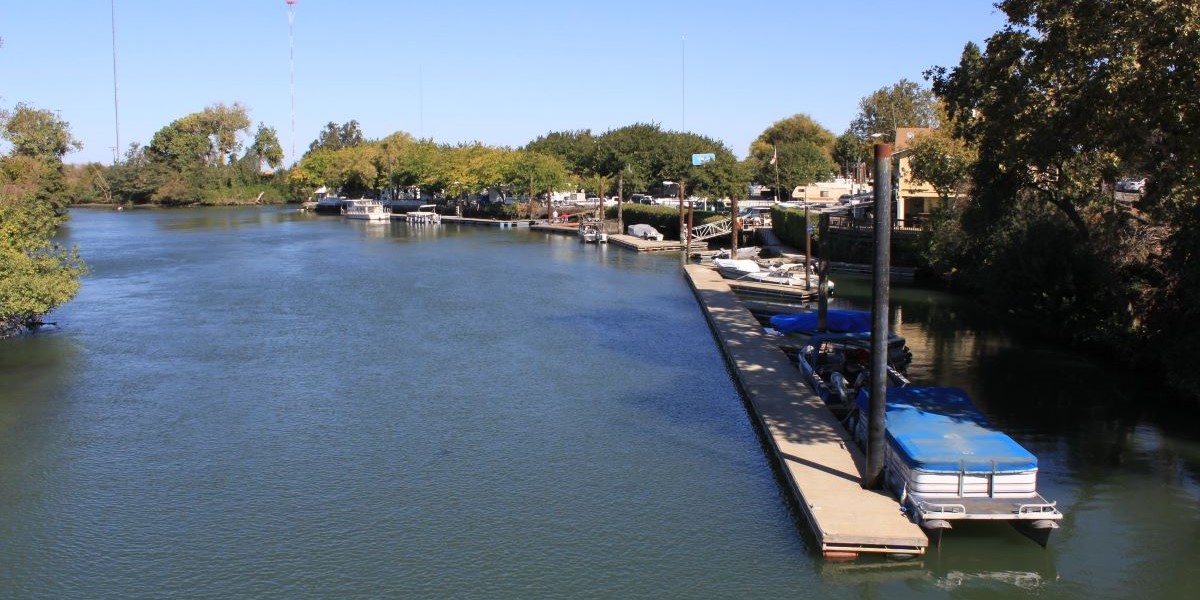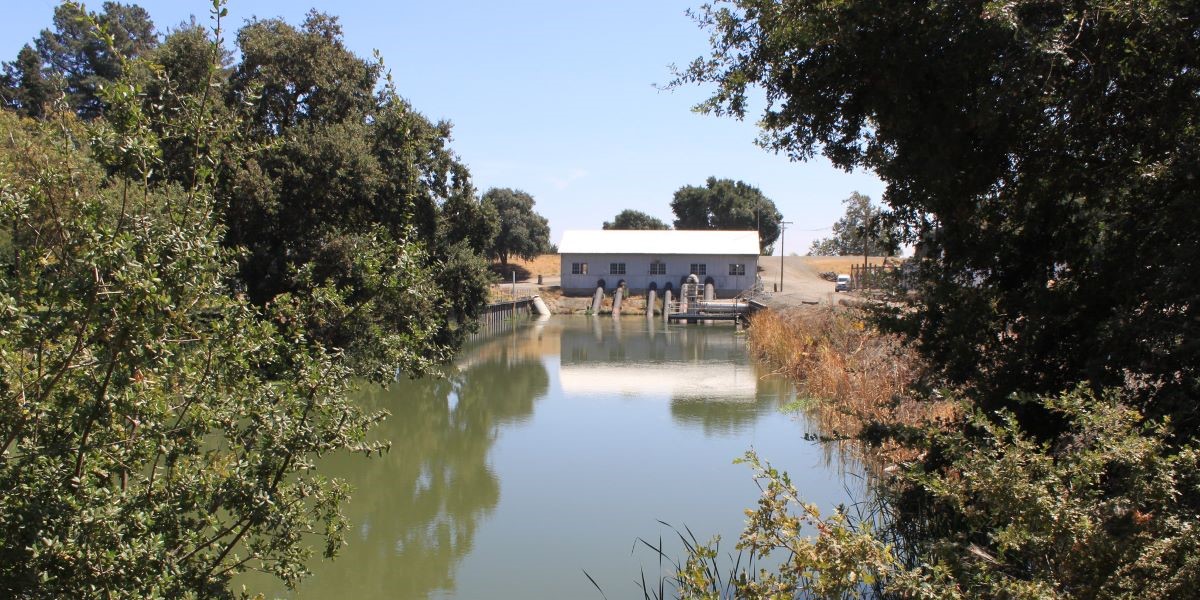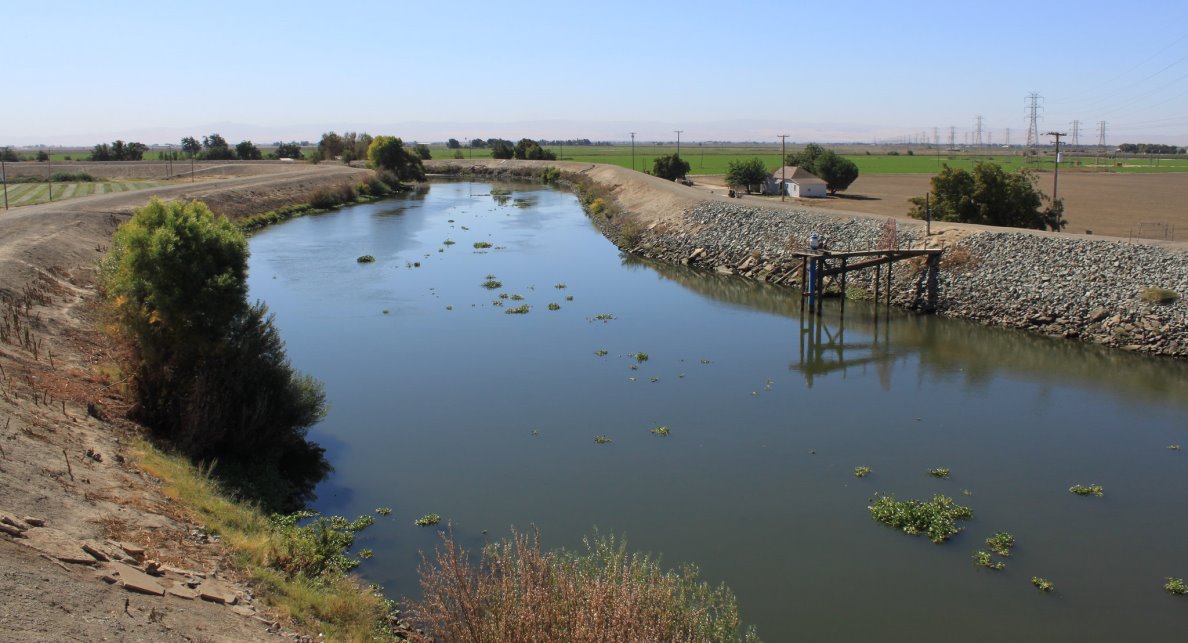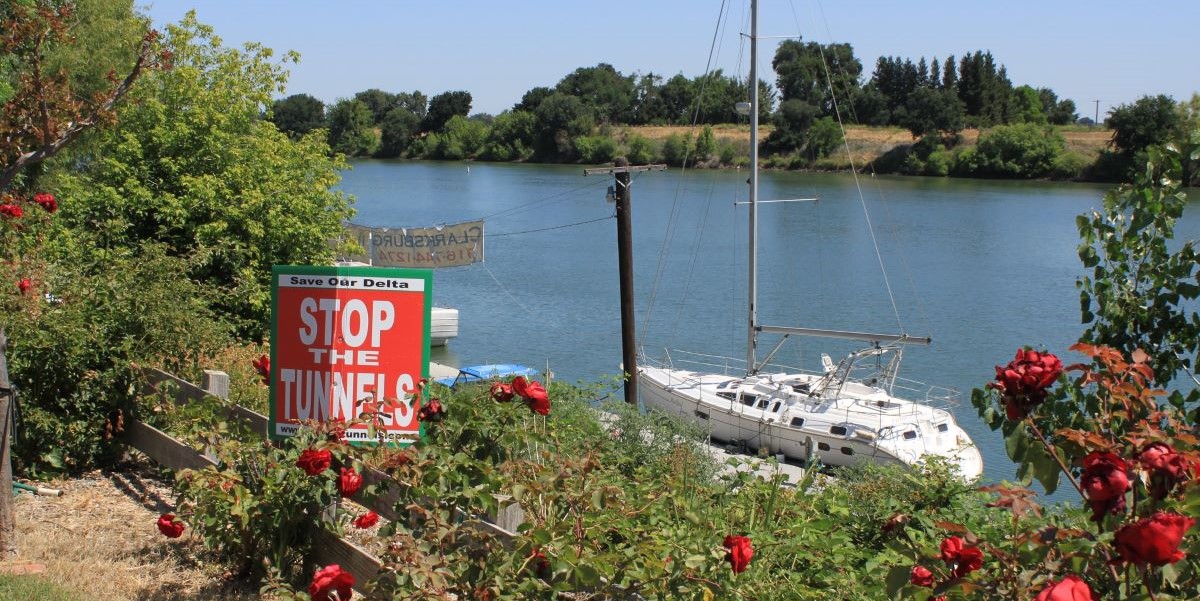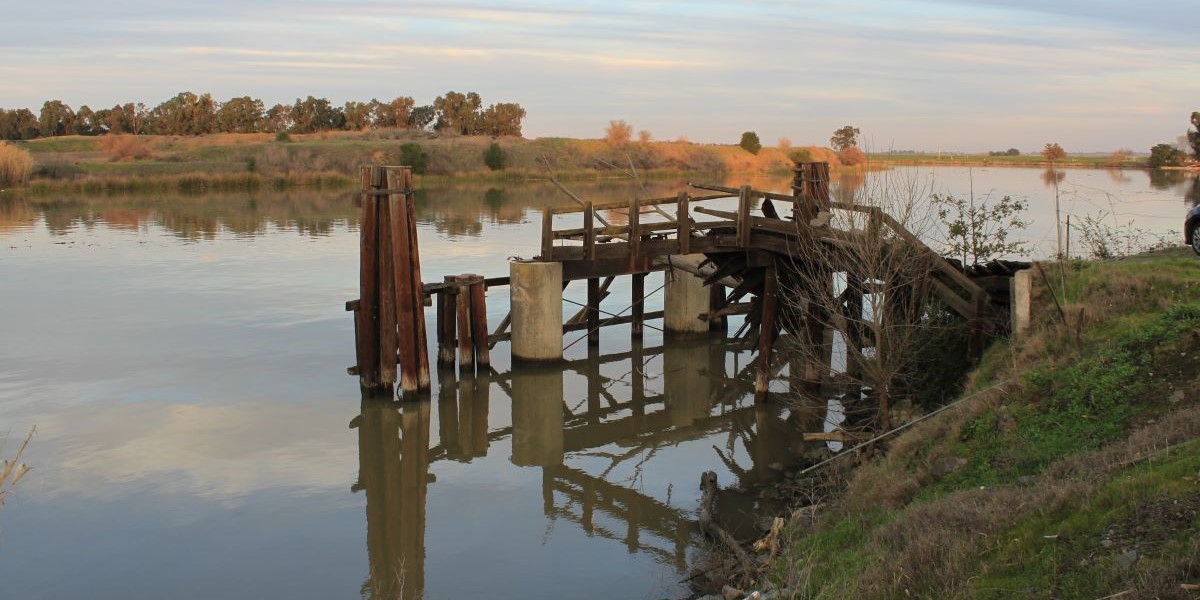 The Delta Counties Coalition (DCC) is an alliance of the California Counties of Contra Costa, Sacramento, San Joaquin, Solano, and Yolo. These counties work collaboratively to give one voice on behalf of the Sacramento-San Joaquin River Delta and its 4 million area-wide residents. The DCC advocates for three goals: to improve the Delta ecosystem, to provide a more reliable water supply for the State, and to protect and enhance Delta communities.
The Delta Counties Coalition (DCC) is an alliance of the California Counties of Contra Costa, Sacramento, San Joaquin, Solano, and Yolo. These counties work collaboratively to give one voice on behalf of the Sacramento-San Joaquin River Delta and its 4 million area-wide residents. The DCC advocates for three goals: to improve the Delta ecosystem, to provide a more reliable water supply for the State, and to protect and enhance Delta communities.
With the release of the environmental documents for the Delta Conveyance Project imminent, the Delta Counties Coalition hosted a forum in June of 2022 to air their concerns about the project and to push for alternative solutions.
The panelists included:
- Barbara Barrigan-Parrilla, Restore the Delta
- Kelley Taber, Somach Simmons & Dunn
- Ryan Hernandez, Contra Costa County
- Dr. Jeff Michael, Director, Public Policy Programs, and Professor of Public Policy at the University of the Pacific
- Lenora Clark, a recreational user of the Delta
- Russ Van Loben Sels, a generational family farmer in the Delta
- John Herrick, General Counsel with the South Delta Water Agency
Tunnel project overview: Kelley Taber, Ryan Hernandez
Kelley Taber, Somach Simmons & Dunn, and Ryan Hernandez, Contra Costa County, gave a brief overview of the tunnel.
The Sacramento-San Joaquin Delta encompasses about 738,000 acres and five counties. It lies at the junction of the Sacramento River and the San Joaquin River, the two largest rivers in California. The Delta is California’s most crucial water and ecological resource; it’s the largest freshwater estuary on the West Coast of the Americas. It provides important habitat for birds on the Pacific Flyway and fish that live or pass through the Delta.
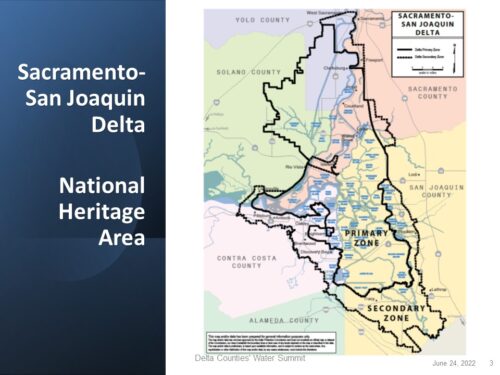 Historically, the bounty of the vast wetlands in the Delta supported population densities of the indigenous people that are thought to be the second highest in North America. After the Gold Rush, in the late 19th century, the Delta underwent a massive reclamation to turn marshland into farmland; unique communities and cultural centers followed. The 20th century brought the development of large-scale water projects, the federal Central Valley Project and the State Water Project, which are the infrastructure that provides Delta water to irrigate Central Valley farms and water for urban use in the Bay Area and Southern California.
Historically, the bounty of the vast wetlands in the Delta supported population densities of the indigenous people that are thought to be the second highest in North America. After the Gold Rush, in the late 19th century, the Delta underwent a massive reclamation to turn marshland into farmland; unique communities and cultural centers followed. The 20th century brought the development of large-scale water projects, the federal Central Valley Project and the State Water Project, which are the infrastructure that provides Delta water to irrigate Central Valley farms and water for urban use in the Bay Area and Southern California.
And yet, the Delta is a rural place. It’s an important ecosystem that includes historic towns, scenic roads, farm stands, and ample recreation opportunities, such as boating, fishing, birding, and biking. The Delta is so important that it was recognized as a National Heritage Area back in 2009. Congress designates the National Heritage Area for places where natural, cultural, historical, and recreational resources combine to form a cohesive, nationally important landscape. And for now, it’s the only one in California.
Project facilities
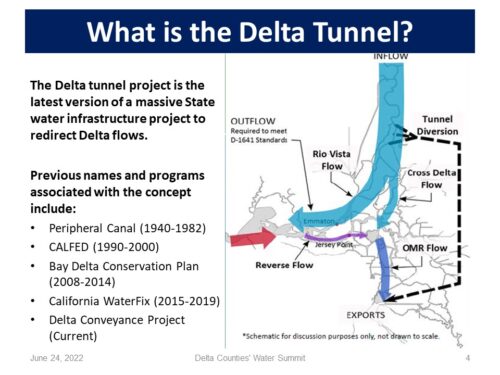 The Delta Conveyance Project is the state’s latest iteration of a massive water infrastructure that has been contemplated many times since the State Water Project was developed. Previous iterations include the Bay Delta Conservation Plan and Cal WaterFix. The project would build intakes near Hood and Courtland, put the water in a tunnel, and convey it to the existing facilities in the South Delta.
The Delta Conveyance Project is the state’s latest iteration of a massive water infrastructure that has been contemplated many times since the State Water Project was developed. Previous iterations include the Bay Delta Conservation Plan and Cal WaterFix. The project would build intakes near Hood and Courtland, put the water in a tunnel, and convey it to the existing facilities in the South Delta.
“They’re going to direct it around the Delta, bypassing the Delta and the ecosystem and all the folks that live here and send that to the export pumps,” said Mr. Hernandez. “So by diverting the water in the flows around the Delta, it’s going to negatively impact our water quality and the folks that live in and around the Delta.”
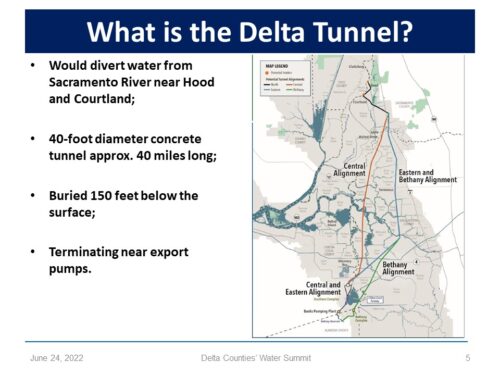 The environmental impact report contemplates three alternative routes, as shown on the slide. The two intakes will be about a quarter mile long, or about 1300 feet; he pointed out that if you laid the Salesforce Tower down on its side, it would be even longer. The intakes will have a capacity of 3000 CFS. The tunnel would be 40 miles long, 40 feet in diameter, and buried 150 feet below the Delta. The tunnel will terminate near the export pumps.
The environmental impact report contemplates three alternative routes, as shown on the slide. The two intakes will be about a quarter mile long, or about 1300 feet; he pointed out that if you laid the Salesforce Tower down on its side, it would be even longer. The intakes will have a capacity of 3000 CFS. The tunnel would be 40 miles long, 40 feet in diameter, and buried 150 feet below the Delta. The tunnel will terminate near the export pumps.
The expectation is that the Bethany Alternative will be the preferred alternative. Construction would last 14 years and run 24 hours a day. With permitting expected to take anywhere from two to six years, it could be as long as 20 years before the tunnel is operational.
“The Bethany Alternative doesn’t provide any local benefits,” he said. “The tunnel is strictly to secure high-quality water for exports. Previous estimates were $16 billion, that’s estimated in 2020 dollars. And it doesn’t count for the inflation and the increase in construction costs that we’re seeing right now.”
The tunnel boring process will produce what the state calls reusable tunnel material; in the past, it’s been referred to as ‘tunnel muck.’ “There is no plan actually to reuse this tunnel material,” he said. “It’s going to be piled 15 feet high on 123 acres more or less all over the Delta, and just fundamentally changing the look and the feel of the Delta.”
Construction impacts
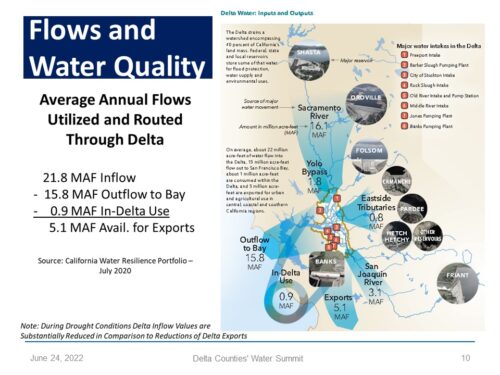 The Delta is a critical juncture for the water supply system. The slide illustrates how the system works. The Delta drains a watershed that accounts for about 40% of California’s freshwater supply. Federal, state, and local reservoirs store some of that water for flood protection, water supply, and environmental uses. Only a small amount of the water that goes through the Delta is actually used in the Delta. Water is pumped out of the Delta for use in the Bay Area, Central Valley, and Southern California.
The Delta is a critical juncture for the water supply system. The slide illustrates how the system works. The Delta drains a watershed that accounts for about 40% of California’s freshwater supply. Federal, state, and local reservoirs store some of that water for flood protection, water supply, and environmental uses. Only a small amount of the water that goes through the Delta is actually used in the Delta. Water is pumped out of the Delta for use in the Bay Area, Central Valley, and Southern California.
Critically, enough fresh water has to flow through the Delta during dry months to repel saltwater pushing inland from the ocean in San Francisco Bay. The state and federal water projects use reservoirs to help control that salinity from reaching into the Delta. But during drought conditions, there simply isn’t enough water in these upstream reservoirs to push the saltwater back, which can contaminate the water supply for Delta residents and the state and federal water projects. And that is a key factor behind the decision to move forward with a Delta tunnel; it’s protecting water quality for the exporters.
Ms. Taber pointed out that the Delta tunnel doesn’t do anything to help protect the Delta from the effects of sea level rise. “The Department of Water Resources and the Delta tunnel proponents have basically said, we’re going to solve the problems of climate change for water users outside the Delta and Delta folks, you’re going to be on your own.”
The Delta is a common resource; it’s the freshwater supply for people in the Delta. “The Delta Counties’ position is that the State Department of Water Resources has an obligation to protect that water supply and resource for the entire state and the environment, not just for the water exporters,” said Ms. Taber. “The Delta exports have been shown, since the start of the state and federal water projects, to disproportionately impact the environment and fish and wildlife because the flows are just so negligible that the estuary doesn’t function as it should anymore. And the tunnel provides no incentive to help solve the water quality problems, or to strengthen levees in the Delta.”
Construction will devastate communities in and around the Delta during the construction period of 10 to 14 years. The one report they’ve seen is that there will be impacts on air quality, noise, road traffic, emergency access, farms, communities, and businesses.
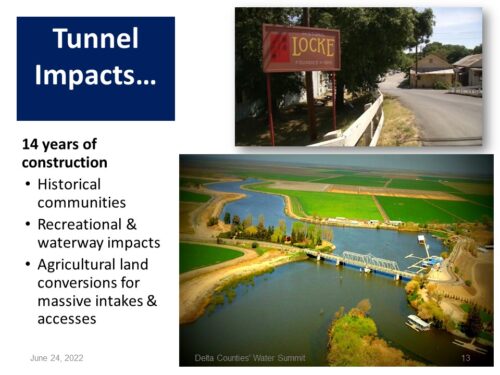 Why should people who live outside the Delta care about this? “I grew up in the Delta; I live in the Delta now. I love it. But I think you can still care about the Delta and know that the Delta is worthy of protection if you don’t live in the Delta and if you’ve never even been to the Delta. I’ve never been to the Amazon, but I know that it’s worthy of protection, and I’m going to advocate for that in the same way that I’m passionate about preserving the Delta and caring about these impacts.”
Why should people who live outside the Delta care about this? “I grew up in the Delta; I live in the Delta now. I love it. But I think you can still care about the Delta and know that the Delta is worthy of protection if you don’t live in the Delta and if you’ve never even been to the Delta. I’ve never been to the Amazon, but I know that it’s worthy of protection, and I’m going to advocate for that in the same way that I’m passionate about preserving the Delta and caring about these impacts.”
The impacts on historical communities would be significant. The legacy communities are the basis for the National Heritage Area designation.
“They probably couldn’t have chosen a more devastating location to site these intakes, and there was really no effort to look at alternative locations in the Delta,” said Ms. Taber. “Even if you assume that the tunnel was a good idea that should go forward, should these intakes have been located in the places where they were likely to do maximum damage to the Delta communities, culture, and historic places? It’s a good question because the Delta fish experts actually had other locations in mind.”
Construction can be disruptive, even if only for a couple of weeks. “It’s dirty; it’s irksome,” she said. “Imagine living in the Delta. And this goes on for a decade or more, only worse because when it’s over, some of your neighbors and the businesses that you patronize aren’t going to be there anymore because their land has been condemned, or they simply haven’t been able to weather the economic storm.”
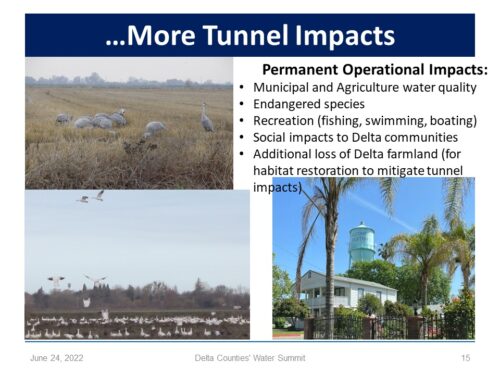 She also pointed out that the Delta already suffers from air and water quality impacts associated with harmful algal blooms. By removing a significant portion of the freshwater flows and reducing the water available to flush the Delta channels, there will be more harmful algal blooms.
She also pointed out that the Delta already suffers from air and water quality impacts associated with harmful algal blooms. By removing a significant portion of the freshwater flows and reducing the water available to flush the Delta channels, there will be more harmful algal blooms.
“So the tunnel really isn’t solving a problem associated with climate change, but it’s exacerbating a significant problem that we’re already experiencing,” Ms. Taber said.
“So it’s not just construction; when it’s done, the impacts don’t end. We’ll be seeing permanent impacts on water quality. We’ll be seeing impacts to fisheries, recreation, and of course, the ongoing social, community, and economic impacts in the Delta.”
The freshwater pathway
“The thinking from the state that the tunnel is the only solution, and this is what we have to do to protect ourselves just isn’t true,” Mr. Hernandez said. “There are alternatives out there.”
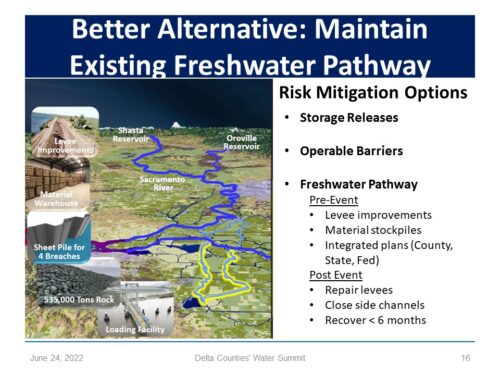 One is the freshwater pathway, which is a combination of storage releases and operable barriers that would provide a path for freshwater in the event of an earthquake and/or sea level rise. The Freshwater Pathway approach is included in the state emergency response and preparedness plan. Already, materials have been stockpiled, seismic vulnerability analyses have been conducted, and major portions of the Middle River levee have been improved.
One is the freshwater pathway, which is a combination of storage releases and operable barriers that would provide a path for freshwater in the event of an earthquake and/or sea level rise. The Freshwater Pathway approach is included in the state emergency response and preparedness plan. Already, materials have been stockpiled, seismic vulnerability analyses have been conducted, and major portions of the Middle River levee have been improved.
“It’s in their documents that the potential outage is six months,” he said. “If the levees were to break or there was an earthquake, we have the resources and the storage in the south of Delta areas that will get us through this type of disaster. So, more needs to be done on alternatives. There needs to be a serious look from the state to consider this existing freshwater pathway alternative. And so we’re hoping to see that in the draft EIR that’s coming out. But we won’t hold our breath.”
Project timeline and opportunities for public comment
The state will release the draft environmental impact report this summer for public review.
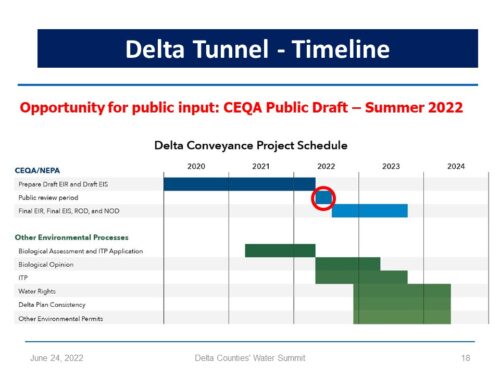 “You can review it at any level you want, but the key is to engage in the comment and to let the decision makers know your thoughts,” said Ms. Taber. “This is your chief opportunity now to weigh in on this process. And we encourage everyone to comment on the environmental documents and the merits of the project.”
“You can review it at any level you want, but the key is to engage in the comment and to let the decision makers know your thoughts,” said Ms. Taber. “This is your chief opportunity now to weigh in on this process. And we encourage everyone to comment on the environmental documents and the merits of the project.”
She noted that there would be future opportunities during the permitting process, but this is the time to comment. “This is really worth your time. And it doesn’t take much to make your voice heard. So we encourage everyone to do that by participating in the CEQA and environmental process over the next few months.”
There is another opportunity to protect the Delta through the National Historic Preservation Act, a law that applies to federal agencies. The Army Corps of Engineers has to issue permits for the Delta tunnel intakes, and in doing that, they have to consider ways to avoid or reduce the damage to historic resources.
“The Delta counties that are most affected directly by the tunnel construction are working with the Delta Protection Commission and some of the Indian tribes that are interested in the Delta to become what is called additional consulting parties,” she said. “This is not a process that can stop the tunnel. But if the tunnel is approved, it will allow us to argue for the best possible protection for the Delta landscape from a variety of impacts. This is not just the historic buildings and communities but also the scenic routes, the historic farms, and other features to address various damaging effects. You can go to the Delta Protection Commission website and learn how to get involved.”
“Now’s the time. The Delta is worth your energy and attention.”
Environmental justice concerns: Barbara Barrigan-Parilla
Barbara Barrigan-Parilla with Restore the Delta began the presentations by noting that the term ‘environmental justice’ comes from a legal definition created in the 1990s: Environmental Justice is the fair treatment and meaningful involvement of all people regardless of race, color, national origin, or income with respect to the development of environmental laws, regulations, and policies. This goal will be achieved when everyone enjoys the same degree of protection from environmental and health hazards and equal access to the decision-making process to have a healthy environment to live, learn and work in.
Environmental justice communities are measured by the number of people from communities of color, economically disadvantaged, non-English speakers, unhoused, live in food deserts, have low educational attainment, and other factors. In the Delta, there are significant environmental justice communities that the tunnel will impact, she said.
“In Hood, you have a majority population that is actually Native American and Hispanics that moved to the area during World War Two,” said Ms. Barrigan-Parilla. “They are ground zero for the intake of the tunnels. You have in Clarksburg, Courtland Walnut Grove – 52% of those communities, their first language is Spanish, they are farm workers that live side by side with the landowners in the North Delta. Yet you don’t see them involved in a lot of water processes or decision making.”
 “People who live in the housing tied to those farmers have been there for generations. They’ve made good livings and sent their kids off to college. But these are people who are at stake of not only losing their job with tunnel construction but their home and their water supply.”
“People who live in the housing tied to those farmers have been there for generations. They’ve made good livings and sent their kids off to college. But these are people who are at stake of not only losing their job with tunnel construction but their home and their water supply.”
Antioch is about 56% an environmental justice community with a significant air and water pollution problem. The environmental justice community in West Sacramento measures out at just under 50%.
Stockton is the largest environmental justice community in California, with a population of 100,000 residents that live in the bottom 80 to 99 percentile for all environmental health indicators. The areas of Stockton that experience harmful algal blooms have the fourth highest rate of asthma in the United States.
“The problem now is that water quality is becoming an air pollution problem,” said Ms. Barrigan-Parilla. “Cyanobacteria that is part of harmful algal blooms has been proven to attach itself to particulate matter, which we have an abundance of near the port of Stockton. So there are serious health problems with this. The prevailing winds from the Delta move from the northwest to the southeast, so it blows right into our environmental justice communities.”
Surveys were done by Ag Innovations (a contractor to DWR), so she said it will be interesting to see what mitigation there is for environmental justice communities in the soon-to-be-released environmental documents. “But there is a big difference between measuring a community and understanding a community and mitigating the environmental burdens and impacts that are placed on a community,” she said.
At the stakeholder committee for the Design and Construction Authority, Ms. Barrigan-Parilla said they could never get answers to key questions to protect environmental justice communities for mitigating air pollution from the construction of the tunnels, how salinity encroachment would be managed, or how the tunnel won’t further damage water quality. This led to Restore the Delta eventually resigning from the stakeholder committee.
“Water quality has to be significantly improved, so the idea that we’re just going to remain the same, frankly, is a non-starter, especially when we had 46 incidents of HABs last year that exceeded public health values of 200%,” she said. “Why is this significant? Because those cyanotoxins can kill a preschooler, they kill animals. They could show up in irrigation water, they could contaminate drinking water supplies, and now we know that they become airborne.”
“While protecting the water supply for others is important in a difficult world and changing circumstances, that does not mean that you can forget equity in the communities that are tied to the watersheds, and that’s upstream for us, the tribes that are dependent on salmon fisheries, and for our communities,” Ms. Barrigan-Parilla continued. “The reason we focus on environmental justice communities first isn’t to exclude other people. It’s because you have to start at the basics; you have to protect environmental conditions for the most vulnerable people first because if you could solve that problem, it spreads out and up. You solve problems for everybody.”
Economic impacts
Dr. Jeff Michael is the Director of Public Policy Programs at the University of Pacific.
“Sometimes this project is portrayed as something that’s essential for the state as a whole and needs to be done for the greater good, but the reality is that it doesn’t stand up to that level of scrutiny,” he said.
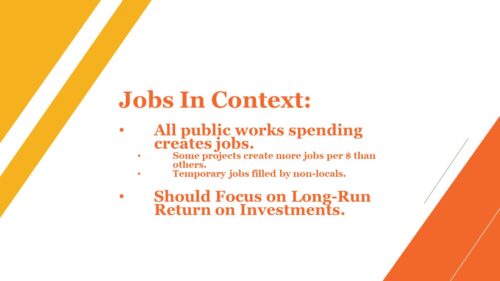 The Delta Conveyance Project is a massive public works project. All public works projects create jobs, and so it will undoubtedly make 1000s of jobs. When proponents of this project are asked about economics, they generally lead with job creation figures. Dr. Michael acknowledged that jobs are a legitimate issue to consider and quantify, but that should not be the primary focus of decision-making.
The Delta Conveyance Project is a massive public works project. All public works projects create jobs, and so it will undoubtedly make 1000s of jobs. When proponents of this project are asked about economics, they generally lead with job creation figures. Dr. Michael acknowledged that jobs are a legitimate issue to consider and quantify, but that should not be the primary focus of decision-making.
“All the alternatives that people will be talking about today are also projects that will create thousands of jobs,” he said. “So if we wanted to take this project and compare it to the alternative uses of resources by the state, we want to ask, is this an efficient or a good job producer? And the answer is no.”
Job creation estimates for the WaterFix project were tens of thousands of jobs over decades, but it added up to six jobs per $1 million of public spending, which Dr. Michael said was one of the lowest job creation figures he has seen for public works projects.
One of the reasons it is an inefficient job creator is the tunnel boring machines, which comprise a substantial amount of the costs. “You’re going to have several of these very large machines 150 feet underneath the Delta, slowly and slowly sort of tunneling and putting the concrete in place,” he said. “I’m told these would have to be imported – the technology, the labor, and the machines themselves. So you’re spending billions of dollars on tunnel boring machines, rather than the kind of spending you would do on alternatives that would create more local jobs.”
“So the bottom line conclusion is if your objective is to create jobs, this actually isn’t a good approach for the state to be taking. But that really shouldn’t be the primary objective for economic analysis.”
“Jobs would be created during the construction period, but many of those jobs will be held by outsiders, and some of them will be held by folks from the Delta,” said Dr. Michael. “So there is some positive economic activity during the construction period. But it’s important to note that there’s a lot of economic destruction on the existing and ongoing businesses in the Delta as well.“
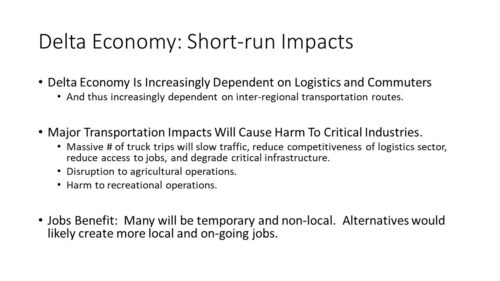 Over the last 20 years, the Delta Counties have become important hubs for transportation, and both growth and income in these regions are primarily dominated by the growth in the logistics and goods movement industry, as well as commuting from the Delta regions into the Bay Area for higher paying jobs. While agriculture remains a base of the economy, the growth of logistics and goods movement industries is a major economic driver.
Over the last 20 years, the Delta Counties have become important hubs for transportation, and both growth and income in these regions are primarily dominated by the growth in the logistics and goods movement industry, as well as commuting from the Delta regions into the Bay Area for higher paying jobs. While agriculture remains a base of the economy, the growth of logistics and goods movement industries is a major economic driver.
“Out of over 360 metropolitan areas in the United States, Stockton is now number two for its dependence on the logistics and goods movement industry and is number one in the nation for growth in that industry in the past decade,” said Dr. Michael. “It’s critical to the economy.”
The project would generate massive amounts of truck traffic, adding congestion to transportation routes and damaging the infrastructure communities have invested in. This will prevent people from getting to their jobs and farms from operating efficiently. It will impact the competitiveness as a region for the logistics industry, increasing their costs and disrupting their activities. It would harm historic businesses and economies in the Delta by disrupting agriculture and recreation.
“There’s a whole host of negative impacts that we haven’t completely quantified that might offset some of the employment impacts,” said Dr. Michael, noting these are just the short-term impacts.
More important are the long-term impacts. “Having construction work on in your neighborhood can be disruptive, but at the end of the day, you have the infrastructure that’s benefiting you, your community, and your neighborhood,” said Dr. Michael. “With this, you have 15 to 20 years of disruption in the Delta. And at the end, you have infrastructure that provides zero benefits to your community but with significant risks of long-term economic impacts. Water quality impacts all agricultural, recreational, health, and municipal water supply users there. So a lot of risks to further worsen an already problematic water quality situation.”
Flood control is important, and flood control investments are better when more stakeholders are involved in supporting those investments. “If the water exporters build a system that protects them with it and pull themselves out of the system, there’ll be less interested parties and I believe could have negative impacts on flood control in the Delta, which could have significant economic impacts.”
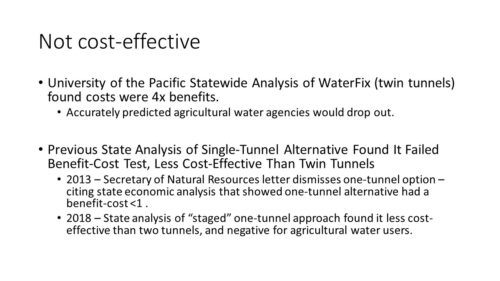 As for the statewide impacts, this project is not cost-effective and has had financial problems all along, said Dr. Michel. “Going back to the Bay Delta Conservation plans and the twin tunnels, there’s never been a financially feasible, viable financial plan for this project because it just doesn’t pencil out very well. I did an analysis on the WaterFix Twin Tunnels and found that the cost of the project was four times the benefits of the project if you follow the project as described in the environmental impact report. There has been some response from the state where they put out reports, looking at the economics that has much larger water supplies than they have in their environmental impact report, and even those studies found that it was challenging.”
As for the statewide impacts, this project is not cost-effective and has had financial problems all along, said Dr. Michel. “Going back to the Bay Delta Conservation plans and the twin tunnels, there’s never been a financially feasible, viable financial plan for this project because it just doesn’t pencil out very well. I did an analysis on the WaterFix Twin Tunnels and found that the cost of the project was four times the benefits of the project if you follow the project as described in the environmental impact report. There has been some response from the state where they put out reports, looking at the economics that has much larger water supplies than they have in their environmental impact report, and even those studies found that it was challenging.”
The project has been scaled down to a single tunnel; a large part of why the California WaterFix ran aground was financial troubles; agricultural interests in the Central Valley just couldn’t afford to pay for it. However, the problem with a single tunnel project is that it’s less cost-effective than the twin tunnel project.
“The reason for that is that scaling down somewhat to one tunnel does reduce costs, but really not all that much, and it does make it a more difficult system for them to operate,” said Dr. Michael.
So why should you care if you’re not paying for it? “Understand that when a project like this has big financial problems, it affects all the other aspects of the project as well.”
One aspect is equity, he said. “The financing plans for this project consider that if the agricultural users in the Central Valley are unable or unwilling to pay their share of costs, the urban water agencies will sort of step up and pay the costs and receive the water. So the financing plan could lead to a redistribution of water supplies out of the Central Valley of California and toward urban coastal areas. That’s a serious equity issue that the state needs to deal with on a state level, particularly because those urban coastal areas have many more alternatives available for their water supplies in the future.”
He said the other issue is that the financial issues conflict directly with the environmental commitments. “A lot of environmental commitments or promises say that we’ll operate it in this way that’s less harmful to the environment. We won’t take too much water through the tunnels when it’s harmful to the environment. But when you have a project with financial problems that is being paid for through water sales, it’s a very problematic situation. It’s going to create a lot of direct conflicts. We know that environmental promises in the Delta have repeatedly been broken when they run up against economic interests. And I think the risk is very high for this project as well.”
Finally, Dr. Michael said that downsizing to one tunnel doesn’t save a lot of money; costs are rising and water demand is declining. In 2017, the Department of Water Resources estimated a one tunnel alternative would cost 11.7 billion dollars, which was about 25% less for one tunnel instead of two. In 2020, the preliminary cost estimate came out at $15.9 billion.
“We don’t know what it is today, but we do know that construction costs have just skyrocketed in the past two years,” said Dr. Michael. “In the past two years, the state’s construction cost index has increased by 30%; I believe 29.4%, to be precise. So if we just applied that escalator to construction costs that we’re well aware is happening in the economy today to this figure, we’re already above $20 billion on this conveyance.”
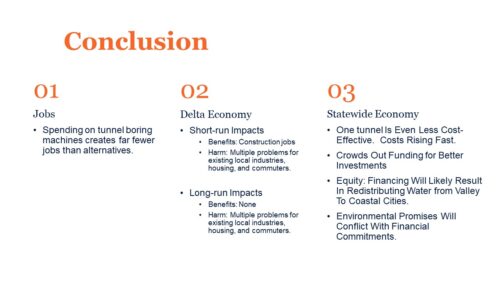 Dr. Michael also pointed out that the state of California has seen its population decline for two years in a row after a lot of flattened growth for that in the future, and the prospects for growth in the future are much, much lower than people were expecting a decade ago. So there are fewer people to spread the costs over, and folks are getting more efficient in their water use, so the impacts on water bills and rates are going to be significantly higher than what people were talking about five years ago.
Dr. Michael also pointed out that the state of California has seen its population decline for two years in a row after a lot of flattened growth for that in the future, and the prospects for growth in the future are much, much lower than people were expecting a decade ago. So there are fewer people to spread the costs over, and folks are getting more efficient in their water use, so the impacts on water bills and rates are going to be significantly higher than what people were talking about five years ago.
In conclusion, “Yes, we create jobs, but it’s not a particularly good way to create jobs with public spending in California. The Delta economy is not benefited significantly by this in the short run and is certainly harmed in the long run. And it’s really not a good investment for the state. It has a lot of issues. Basically, the return on investment is just not there. And the financial problems, some of them are very difficult to solve and create a lot of other problems for equity and the environment.”
Lenore Clark: Recreational impacts
Lenore Clark then spoke about recreational impacts. As an American pastime and economic engine, recreational boating creates $13 billion yearly in manufacturing, supplies, sales, services, and other recreational spending. In California, boating creates 41,125 jobs and 2820 small businesses; the state has 745,641 registered boats.
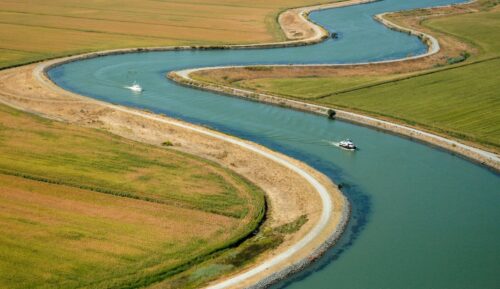 “The statistics show that boating is big business and will continue to be an opportunity for recreating in the Delta, as long as the Delta remains viable for boating,” she said. “We are opposed to the project because it seriously impacts our access to over 1000 miles of waterway in the Delta. And will for up to 13 years with gates and locks and safety issues that go along with that kind of construction.”
“The statistics show that boating is big business and will continue to be an opportunity for recreating in the Delta, as long as the Delta remains viable for boating,” she said. “We are opposed to the project because it seriously impacts our access to over 1000 miles of waterway in the Delta. And will for up to 13 years with gates and locks and safety issues that go along with that kind of construction.”
The tunnel’s construction will impact businesses in the Delta, such as marinas, restaurants, boat service businesses, and others. Outdoor recreation contributes significantly to the mental and physical well-being of the people that recreate on the Delta. The Rio Vista Bass Derby would be ruined. Invasive species will make swimming, boating, or fishing difficult, if not impossible.
“As boaters, we have a right to navigate the waters, not only the Delta but California and the state, and a lot of this construction will impede our right to do that,” Ms. Clark said.
“The Delta is a significant and most important estuary in North America, but it has a global impact worldwide. And I see that if we continue on this track, there will be some unintended consequences of mucking around with our estuary, and it will have adverse effects for us all.”
Russell Van Loben Sels: Agricultural impacts
Russell Van Loben Sels’s family started farming in 1876; today, his family still tends some of those same lands. “Except for four years at Stanford and three years in the Army, I have lived in the Delta, and I’ve been farming there for 52 years. I’m the secretary and CFO of Amistad Ranches, Secretary/CFO of S brands enterprises, and have been a trustee of Reclamation District 744 for more than 40 years. During the analysis of the BDCP and the California WaterFix, I was the president of the Sacramento County Farm Bureau. I chaired the Delta County Farm Bureau’s Delta caucus, which joined together the five Delta counties to protect, promote and enhance the viability and resilience of Delta agriculture.”
The proposed tunnel project will impact the lives of Delta people on many different levels.
Although two diversion sites are being proposed for the tunnel project in the preferred alternative, a third site is being analyzed, approximately one-quarter mile south of Clarksburg. “Impacts from noise traffic and dewatering will have tremendous negative impacts on the community and could make living in Clarksburg nearly impossible. The same can be said for those who live in the community of Hood, which could be bracketed by two diversion sites, one to the north and one to the south.”
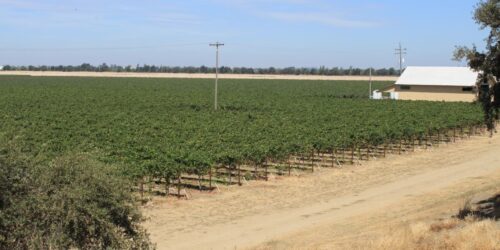 Except for one or two common wells serving several residences, each residence in Clarksburg is served by a private well. Most wells are 150 to 200 feet deep, which is in the same depth zone as the area that will be dewatered during the tunnel project construction. It is unknown how underground aquifers will react to dewatering and whether or not the water supply for Clarksburg will be impacted, but it is definitely possible. That Clarksburg water supply could be interrupted for up to 10 years or longer and that the aquifer may be permanently damaged by dewatering.
Except for one or two common wells serving several residences, each residence in Clarksburg is served by a private well. Most wells are 150 to 200 feet deep, which is in the same depth zone as the area that will be dewatered during the tunnel project construction. It is unknown how underground aquifers will react to dewatering and whether or not the water supply for Clarksburg will be impacted, but it is definitely possible. That Clarksburg water supply could be interrupted for up to 10 years or longer and that the aquifer may be permanently damaged by dewatering.
Construction impacts will involve massive amounts of noisy construction activities including pile driving, truck traffic, grading, and other constructed-related noise. Certainly, these impacts will make living in Clarksburg, Hood, Courtland, and Walnut Grove, four of the Delta legacy communities extremely difficult.
Construction-related traffic will include 1000s of truckloads of fill dirt to two diversion sites and the possible removal of millions of cubic yards of tunnel muck, making transportation around the North Delta very difficult. All this traffic will occur on winding, narrow, unforgiving two-lane levee roads with minimal shoulders and no bike lanes. Minor collisions can become very serious or fatal and often occur.
Although Clarksburg, Courtland, and Walnut Grove have small grocery stores, most residents do their shopping in Sacramento, Elk Grove, or Galt. Driving is a condition of life in the Delta. And the inability to use the roads due to congestion or safety issues will make life intolerable, extremely difficult, or impossible.
Amistad Ranches grows grapes, corn, wheat, safflower alfalfa, and tomatoes within Reclamation District 744, the northernmost tunnel diversion site. The proposed intake will take land for staging and other associated tunnel operations.
“California WaterFix would have taken 250 acres of land that we farm,” said Mr. Van Loben Sels. “The conversion of agricultural land in that analysis was categorized as temporary to last only during the construction phase. However, those activities will likely temporarily last permanently. Can you imagine what it might take to return the land to agricultural production after this had muck piled 10 to 20 feet high on it or heavy truck traffic for 10 to 15 years? In addition, adjacent land could be impacted by dewatering, altered drainage patterns, disrupted irrigation systems, dust, and negative impacts to the reclamation districts within which they operate.”
“It’s hard to imagine how agriculture operations could coexist with ten to fifteen years of intense industrial activity,” said Mr. Loben Sels. “Transportation throughout the North Delta will become very difficult during the construction phase. Amistad Ranch moves employees, tractors, implements, and agricultural products on Delta roads every day. We’re already experiencing congested commuter traffic patterns around Twin Cities Road, Walnut Grove, and River Road between Hood and Freeport.”
“Ten to fifteen years of truck and other construction-related traffic will only make farming in the North Delta more and more difficult, maybe even impossible,” he continued. “Negative impacts associated with the proposed tunnel will also impact our employees; we employ 20 to 100 seasonal employees. If they cannot reach their job sites, they’ll look for work elsewhere or just won’t work. And that will exaggerate a current labor shortage for labor-intensive crops such as pears and winegrapes.”
The negative impacts of the proposed project will not be limited just to people, he said. All three proposed diversion sites are adjacent to Stone Lakes National Wildlife Refuge where greater sandhill cranes arrive in the fall to roost in the refuge and forage for food in adjacent agricultural lands. Turning a portion of the land adjacent to the Stone Lakes National Wildlife Refuge into an industrial-construction site will reduce and negatively impact the foraging habitat for these birds.
County general plans recognize that agriculture is the foundation of the Delta’s economy, so they value and protect its agricultural resources. The Delta Protection Act of 1992 describes the Delta as an agricultural region of great value. It states that the primary zone should be protected from the intrusion of non-agricultural uses. The Delta Protection Act created the Delta Protection Commission and directed it to create the Land Use Resource Management Plan, which has five land use policies protecting Delta agricultural resources.
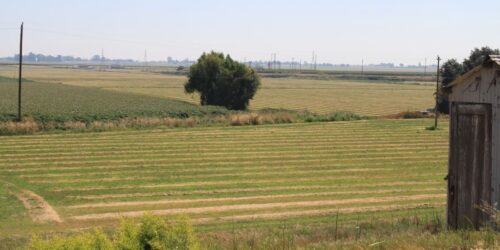 In addition, under the Delta Reform Act, the Delta Protection Commission and Dr. Michaels prepared the Delta economic sustainability plan, which clearly shows that agriculture is the backbone of the Delta’s economy. “The Delta Reform Act established the coequal goals of water supply, reliability, and ecosystem restoration and conditioned their achievement on the protection and enhancement of Delta resources to include agriculture,” said Mr. Van Loben Sels. “The proposed tunnel project will have tremendous effects on the agricultural resources.”
In addition, under the Delta Reform Act, the Delta Protection Commission and Dr. Michaels prepared the Delta economic sustainability plan, which clearly shows that agriculture is the backbone of the Delta’s economy. “The Delta Reform Act established the coequal goals of water supply, reliability, and ecosystem restoration and conditioned their achievement on the protection and enhancement of Delta resources to include agriculture,” said Mr. Van Loben Sels. “The proposed tunnel project will have tremendous effects on the agricultural resources.”
“The negative impacts will be caused by the conversion of agricultural land to other uses, transportation issues, degraded water supply caused by changing flow patterns, intrusion of saltwater into the Delta, and other negative impacts to infrastructures such as drainage, reclamation districts, and flood control,” he continued. “An analysis of BDCP and California WaterFix revealed 64 negative impacts to agricultural resources in the Delta, and 20 of those impacts are classified as significant and unavoidable. I expect this project will do about the same.”
He also questioned the mitigation strategies. “Because the proposed tunnel project will break so many promises and assurances of the past, how can they expect us to trust them when it comes to mitigation? If this project is built, businesses that depend on agriculture will be forced to close, agricultural jobs will decrease, and the Delta economy will begin a downward spiral. The combined effects of this project will be devastating.”
“The more water taken from the Sacramento San Joaquin River Delta, the more economic and environmental damage will occur. Over the last two decades, Delta outflow has been regulated to protect Delta water quality and natural resources, including agriculture. This tunnel project will reverse steps taken to protect the health of the Delta and its economy by providing the means to increase water exports, reduce Delta outflow, change Delta flow patterns, and increase saltwater intrusion.”
Mr. Van Loben Sels said there are better, more affordable projects to advance California’s water reliability. Regional self-reliance and increased water storage are key to California’s water reliability. “We should all be committed to ensuring that the Delta is protected and enhanced in accordance with the Delta Reform Act of 2009, and to searching for solutions, which will achieve the Delta Reform Act’s coequal goals without sacrificing the Delta.”
John Herrick: Agricultural water supply impacts
John Herrick, General Counsel to the South Delta Water Agency, began by posing the question, can a freshwater estuary be improved by having less freshwater flow through it? “If the world could vote on something like this, everybody would agree with that it can’t, and we would do something other than the tunnel project. But that’s not what we’re doing. We’re moving forward. So what is the goal of it’s not to improve the Delta? The goal is to improve the reliability and/or supply for exports.”
“The laws say that the projects have to provide for salinity protection in the Delta, water rights in the Delta, and an adequate supply for the Delta before they can export. And there’s another statute that says releases of water for export have to be coordinated to the greatest extent possible to meet those three goals I said. So if you build a tunnel that takes water from the reservoirs or excess flow in the valley and put that in a tunnel that doesn’t go through the Delta, you’re directly in opposition to those laws I just quoted you.”
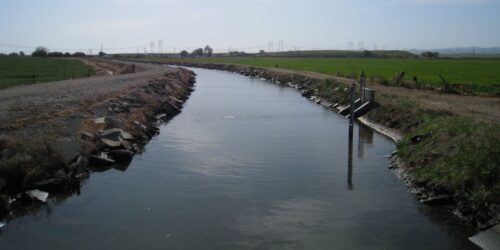 Historically, there were floods and rain events every year, and the waters flowed down into the valley; the excess flow overflowed onto the land in the valley, and that water seeped back into the main channels as the season progressed. Then the dams were built – and for good reasons, he said. It’s not that the dams are bad, but those dams started interrupting the flows down into the valley floor and then into the Delta.
Historically, there were floods and rain events every year, and the waters flowed down into the valley; the excess flow overflowed onto the land in the valley, and that water seeped back into the main channels as the season progressed. Then the dams were built – and for good reasons, he said. It’s not that the dams are bad, but those dams started interrupting the flows down into the valley floor and then into the Delta.
In the early 1900s, the state was experiencing a crisis of saltwater intrusion, which was adversely affecting business, industry, and farming in the Delta. So they decided to build a big system that traps water, helps flood protection, and maintains water quality in the Delta. Even in the early 1900s, they were trying to maintain water quality in the Delta, so that’s what the water projects are supposed to do, Mr. Herrick pointed out.
“The system is now geared towards decreasing water quality in the Delta,” he said.
On the San Joaquin River, they built Friant Dam, which has zero downstream obligations past the Mendota Pool, so none of the water from the upper San Joaquin River reaches the Delta. Then, the Central Valley Project was built, which took Delta water with some salt in it, and delivered it to the south San Joaquin Valley.
“Fifteen years ago, there was upwards of a million tons of salt being delivered to the valley south of us, and between 400 and 600 million tons of salt entered the river and flowed downstream to the south Delta,” said Mr. Herrick.
Mr. Herrick is in the South Delta, which is also where the export pumps for the Delta are. The pumps reroute the flows of the Delta, so the southern Delta channels flow backwards towards the pumps, causing the thousands of tons of salt that the CVP causes to be put in the river to go into the South Delta and collects there, causing water quality problems.
“The tunnel is supposed to take water before it reaches the Delta,” he said. “Now they say, ‘we’re going to take excess flows. So when it’s high water quality, we’ll take that water.’ But the project doesn’t pencil out … In order to make it work, you have to take more water than that. And so what do they do? They take more water, but they don’t tell us. They eventually told us because we had hearings for the WaterFix. And it turns out that the proposed operations of the twin tunnels included many summers. So that’s not excess water when you’re exporting water in the summer.”
Mr. Herrick also noted that different models have different time steps, so the output ends up being averages. “Averages don’t tell you anything. Let me just ask you this. If somebody said the average arsenic in your drinking water is, on average, well below anything that will kill you, don’t you want to know about the times that it’s above average? Because it could be 1000 times what will kill you.”
So they took the data and ran it through the models, and the averages hid months of impacts on water quality in the South Delta. Another model has the channel morphology in the south Delta; it said there was 10 feet of depth in Middle River, but the channel has been silted up; it’s only 2 feet deep or less, he said.
“So the model is calculating the temperature, quality, and flow based on a volume that doesn’t exist,” he said. “So how do you analyze it if you have models that don’t work? Well, you can’t. It doesn’t work.”
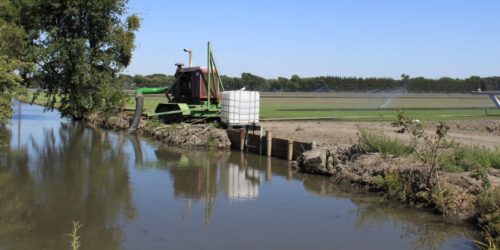 “So how do we know we can improve a freshwater estuary by taking fresh water out of it? Well, we know we can’t. So whatever the model says, whatever they don’t say – it’s not going to work. And the specifics of how bad it harms you is being hidden by the project proponents.”
“So how do we know we can improve a freshwater estuary by taking fresh water out of it? Well, we know we can’t. So whatever the model says, whatever they don’t say – it’s not going to work. And the specifics of how bad it harms you is being hidden by the project proponents.”
“The regulators aren’t your friends,” said Mr. Herrick. “Right now, we’re operating under a fudge, a temporary urgency change, which allows the water quality to be worse. And in the last drought, the State Water Resources Control Board had eight urgency change petition changes to relax water quality standards. So when times get tough, they don’t apply the standard. The rules do not protect us.”
He pointed out that DWR and the Bureau have never been fined or punished for violating water quality standards, and South Delta standards have never been enforced.
“Do you know what the State Board did for the South Delta standard because it kept being violated constantly? They permanently relaxed the standard … So you can’t rely on somebody protecting your water quality. Because the system is geared towards maintaining some level of exports, regardless of the rules or the impacts on other people.”
“So I want you to understand that the water quality situation in the Delta is going to get worse; it’s not going to be protected,” said Mr. Herrick in his concluding remarks. “And if the Delta counties are not banded together, and we’re not fighting this, they will slit our throats and dance happily upon our grave. So you don’t hear too many speeches end with that phrase. But I’ll end with that.”
Delta county supervisors comment
“We’ve heard the backdrop of what lies ahead and the potential damage and threat to a way of life and a real treasure, that being the Sacramento-San Joaquin Delta, and certainly, Suisun Marsh and the estuary itself,” said Sacramento County Supervisor Don Nottoli. “One of the things that the Delta Counties Coalition has worked long and hard at is to bring forward information that would provide alternatives to do that in a rational and reasonable way. … We believe solutions should be guided by the state policy which is in law to reduce reliance on the Delta and to meet our future water supply needs using solutions that don’t sacrifice the Delta.”
“This state does not suffer from the lack of water; it suffers from the lack of infrastructure,” said San Joaquin County Supervisor Chuck Winn. “California receives about 150 to 300 million acre-feet of rainfall every year. Now, obviously, a lot of that goes into the ground, a lot of goes into other projects, etc. But a lot of it also goes into the ocean. For whatever reason, back in the 80s, we had some water storage projects which were terminated. And that was part of the overall plan in place for decades in regards to providing water for our residents.”
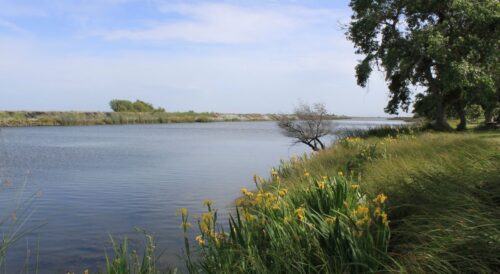 Supervisor Winn noted LA Mayor Garcetti’s goal to reduce reliance on imported water supplies by 50% by 2025 and 100% by 2050. “He had a whole toolbox of ideas in regards to providing, whether it be stormwater capture, whether it be desalination, whether it be recycling – there’s a whole host of things. And I think that his creativity and his vision are something that we can all look at. The fact that matter is, as opposed to investing in one location, we can build a whole bunch of projects.”
Supervisor Winn noted LA Mayor Garcetti’s goal to reduce reliance on imported water supplies by 50% by 2025 and 100% by 2050. “He had a whole toolbox of ideas in regards to providing, whether it be stormwater capture, whether it be desalination, whether it be recycling – there’s a whole host of things. And I think that his creativity and his vision are something that we can all look at. The fact that matter is, as opposed to investing in one location, we can build a whole bunch of projects.”
“I have a list of projects that run from Northern California and Mexico and water projects that are probably the best solution to our water problem because if something happens, we have the opportunity to continue to operate,” Supervisor Winn continued. “The solution to make California a world-class water state is to build these projects, which create local jobs, local benefit, and most importantly, local control. And if one breaks, there are others around that can be used to supplement. … In my dealing with the valley counties, my dealing with the mountain counties, and certainly the Delta counties, I will tell you this: I have found no one that I’ve talked to that disagrees with the premise that we need to do local projects, as opposed to the single tunnels.”
Contra Costa County Supervisor Karen Mitchoff urged everyone to continue persisting and resisting any Delta tunnel project.
Yolo County Supervisor Oscar Villegas said it’s clear the Delta conveyance isn’t the answer to California’s water problems. “Isolated conveyance cannot guarantee one single drop of new water – not one. And if you’re paying any attention at all to the conversation around climate change, the challenges will persist, and the demand will increase. California needs a long-term resilient water portfolio. And an approach that incorporates resiliency is essential.”
“For statewide water solutions to succeed, all those impacted must be considered and included as part of the conversation, including the legacy communities in the Delta. Any tunnel option would harm the environment and the economy. Far superior alternatives have already been discussed here today. We believe that locally based projects that the Delta Counties Coalition proposes will produce more reliable water. Local projects which promote self-reliance are a better alternative. And it’s time to shift the water paradigm.”
Supervisor Villegas concluded his comments by urging counties and local agencies to adopt a resolution opposing the project and to consider writing an editorial that addresses the concerns about the project.
San Joaquin County Supervisor Katherine Miller said tunnel proponents put forward false narratives that we must build a tunnel because the status quo is unacceptable. “Nobody’s arguing for that. We have consistently advocated for a multitude of regional projects that would provide for regional reliability, sustainability, local jobs, local control, local operation, and multi-benefits to the regions where these projects are constructed.”
Another false narrative is that conservation is the answer, she said. “Nobody’s saying conservation can do it alone. But conservation is key to making this state’s water supply self-reliant. Above ground storage – what we have consistently advocated for is looking at expansion of existing reservoirs. That’s very doable. It’s much more cost-effective. We’ve also looked at a wide variety of other local projects that will actually increase our state’s water supply, which is what we need to provide for a dry year supply.”
“Another false narrative that has been put forward over and over is will we have to do an isolated conveyance because all the levees in the Delta might fail if there’s a massive earthquake. Well, if that’s really a threat, then why hasn’t the state used existing taxpayer dollars that are there and available to upgrade and improve the existing levee system in the Delta? They haven’t done it because they want to keep using this threat to make people believe that an isolated conveyance is the only answer to safety. It isn’t.”
“It is time for California to unite around good, solid sustainable water projects that solve our supply issue instead of dividing us as we are all Californians,” Supervisor Miller concluded.
Questions & Answers
QUESTION: Have the Delta Counties Coalition been successful in discussions with the state and SWP contractors about mitigating transportation impacts to road surfaces and levees underneath?
Kelley Taber: “In a word, no. So far, we haven’t had any commitments about mitigation. And we’ll be looking to see what the environmental impact report includes on that point. But I’ll just note that over the last couple of years, there was a stakeholder engagement committee process that the State Water contractor proponents, in conjunction with the Department of Water Resources, put on to hear from Delta residents about their concerns. And some tweaks were made to the project that had the benefit of addressing some concerns about access and transportation. But it was really just tinkering around the edges, and the changes weren’t made to address the concerns of Delta residents. Make no mistake; they were made because the independent technical review panel hired by the state to look at the feasibility of what they previously approved told them it was essentially unbuildable. So those design changes weren’t made in response to Delta resident concern.”
QUESTION: Can you tell us what percentage of this proposed diversion of water reflects as a total percentage of water that moves to the Delta in its current state?
Kelley Taber: “We’re looking to the document coming out for that information. This reinforces what we said earlier in the presentation about why everyone needs to take a hard look at these documents when they come out because, so far, the operations which are critical for understanding so many of the impacts of water operations on folks in the Delta, have been shrouded in mystery. In the prior version, there were times when the project could divert half of the flow of the Sacramento River. And that goes to Mr. Herrick’s point about, is it a good idea to take fresh water out of the Delta that’s already experiencing water quality problems? I think that common sense can tell you that taking any water north of the Delta is a concern, but half the flow of the river would be extremely problematic.”
John Herrick: “It’s not a question of the percentage we’re taking out. It’s a question of how much is coming out and at what time. So nobody cares if you want to take 3000 CFS when there’s 5 million acre-feet flowing through the Delta every day because of a flood. If you’re going to take 3000 CFS when it’s a dry, dry time, the standards aren’t being met. Then you get a temporary urgency change petition that says it’s okay.”
QUESTION: Have the counties or Dr. Michael analyzed job loss in each Delta County if local projects, such as schools, hospitals, roads, etc., cannot move forward due to air quality restrictions if the tunnel project is using up all available air credits?
Dr. Michael: “I’m not aware of any specific analysis of that. But that’s an excellent comment because we see air quality restrictions that are challenging in these communities. And increasingly, this is an issue for a lot of projects. So if we have a project with significant air quality impacts, it will be more challenging for local projects. So that’s an important area to look into.”
QUESTION: The project costs due to construction are increasing. Who will pay for the project if some or most water contract contractors are not?
Kelley Taber: “If the water contractors either can’t or won’t pick up the added costs, the plan is for urban ratepayers to pick up the cost. So that means for a whole lot of Californians, the cost of their water is going to become astronomically expensive. Somebody has to pay for it.”
- Delta Counties Coalition website
- Restore the Delta website
- Delta Conveyance Project, page at the Department of Water Resources
- Delta Conveyance Project, page at the Department of Fish & Wildlife
- What’s next for the Governor’s plan to replumb the Delta?, article from Cal Matters


